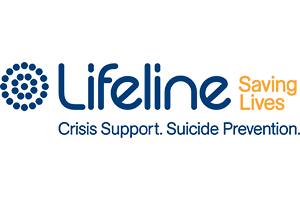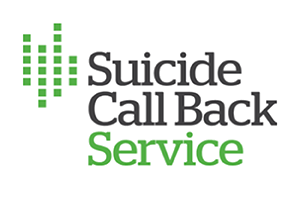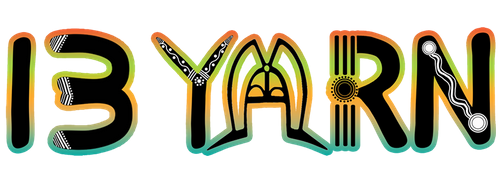Something’s not right
- Mark Discussion as New
- Mark Discussion as Read
- Float this Discussion for Current User
- Favourite
- Subscribe
- Printer Friendly Page
- Mark as New
- Favourite
- Subscribe
- Get link
- Flag for Moderator
10-04-2022 11:15 PM - edited 12-07-2022 04:02 AM
10-04-2022 11:15 PM - edited 12-07-2022 04:02 AM
Finally Found – A CBT-p Practioner – Part 3
This is my third posting about my ongoing experiences with Cognitive Behavioural Therapy for Psychosis (CBT-p).
I make these posts because they may be of interest to others wanting to explore drug free interventions for psychotic related problems such as schizophrenia or bipolar disorder. Thinking, writing and then posting about my experiences also helps me to reinforce the process in my mind.
CBT-p is very much about practising how we look at, think and respond to our day to day experiences. To be effective, it requires regular practice. There is a lot of convincing evidence that with such practise, CBT-p is likely to be at least as effective as any drug based intervention.
I have now attended 3 sessions with the psychologist. I was due for a forth session but her daughter contracted Covid and the psychologist had to isolate. Easter also gets in the way so it will be a month between my 3rd and 4th session. I could have opted for a tele-session which on all accounts work just as well but I prefer to wait until one-on-one sessions are available again.
I am not worried about the break between sessions. I have plenty of “homework” to do which involves observing and recording my thoughts and feelings as they relate to my day to day activities together with practices for grounding myself as I make these observations or deal with various issues.
For me, the Cognitive Behavioural Therapy (CBT) part of this process is simply an established and proven structure for dealing with a tangled network of thoughts, feelings and behaviours in my mind. The reason for this tangled mess is not really important but it appears that in my case a lot of it probably resulted from the trauma of being forcefully and probably illegally used as a human guinea-pig for psychiatric research by the psychiatric profession and their institutions. Many like me who were involuntarily hospitalised in the 1970's and 1980's were subjected to similar treatment.
The psychosis (-p) part of this CBT-p process is simply the willingness and ability of the CBT-p practitioner to engage in a normal and respectful way with someone who is deemed to be psychotic . For many years I have been selected, inspected, injected and then finally rejected by the psychiatric profession and the Victorian Mental Health Authorities (VMHA) as being hopelessly insane. I was told quite recently that I was considered by the VMHA to be a serious danger to society. Their proposed solution to this “problem” was to increase my level of my medication to the point where I would be unable to function and then put me in a lock up aged care facility for people with “incurable” mental illness.
Seeing that I am still quite active for my age, this is hardly a welcome outlook. To put it bluntly I am terrified of this prospect which results from the ignorance and fear that surrounds psychosis by the general public, the VMHA and the psychiatric profession.
CBT-p is not a single process but a collection of techniques. The CBT-p practitioner hopefully employs the right selection of these techniques in a skilful way to help facilitate the mental untangling. From the first session, my practitioner started mapping out the connections in my brain based on our dialogue. Attached is the current “map” of key mental elements that seems to currently drive my life and accounts rationally for the irrational way that I sometimes behave or respond to situations. This map is still evolving.
The other ongoing homework is about staying grounded or anchored, particularly when problems or difficult situations arise. This has been referred to as the ACE process. Acknowledgement, Connection with one’s body and (re)-Engagement or focusing on the immediate task at hand.
Attached is a copy of a double sided hand out that I was given to use as a ready reference.
I expect that these practices will take quite a while to develop into habits. I have given myself about a year which should involve about 25 fortnightly sessions with the psychologist . In that time I hope to achieve some worthwhile improvements. My psychologist has higher aspirations. She is aiming for a drug free and psychosis free outcome for me for the first time in 50 years.
“Sow a thought and you reap an action; sow an act and you reap a habit; sow a habit and you reap a character; sow a character and you reap a destiny.” ― Ralph Waldo Emerson
Here is a link to the previous post on this subject
Finally Found A CBT-p Practitioner Part 2
Here is a link to the next post on this subject
Finally Found A CBT-p Practitioner Part 4
Regards
Willy
- Mark as New
- Favourite
- Subscribe
- Get link
- Flag for Moderator
10-04-2022 11:45 PM
10-04-2022 11:45 PM
Re: Finally Found – A CBT-p Practioner – Part 3
- Mark as New
- Favourite
- Subscribe
- Get link
- Flag for Moderator
11-04-2022 11:28 AM
11-04-2022 11:28 AM
Re: Finally Found – A CBT-p Practioner – Part 3
Hi @Willy, thank you so much for sharing your experiences as you journey through your CBT-p experience. Reading through the tools, your thoughts and learnings has been really helpful for me to get a better understanding, and I am sure for others who might be considering CBT-p! I really look forward to reading more as you apply these strategies and tools in your recovery, and what you have found most helpful 🙂
That map is brilliant, and sounds like such a great deep dive. I am wondering if you could talk us through how you did the mapping exercise? I am thinking it might be a helpful resource for others too 🙂
- Mark as New
- Favourite
- Subscribe
- Get link
- Flag for Moderator
11-04-2022 12:54 PM
11-04-2022 12:54 PM
Re: Finally Found – A CBT-p Practioner – Part 3
@Willy Its wonderful your therapist has such a vision for you.
You already know I really appreciate your posts.
Mind Mapping is really worth it and been around a while ... so why has it not been more popular with the psych profession ...
For me I heard of the Happiness Trap but not read it.
I use my own anchors due to my connection with my father and our mutual connection with the sea. I used it metaphorically but also added ... getting to water ... and the sea ... a regular practise, along with my earthy/garden side.
Embodiment as a way of dealing life is crucial. I tend to escape into the mind, but grounding and getting back to my body ... with all its aches and pains ... and flaws ... keeps it real.
You have a keyboard as your profile pic. What kind of music do you like/play?
Apple
- Mark as New
- Favourite
- Subscribe
- Get link
- Flag for Moderator
13-04-2022 01:31 PM
13-04-2022 01:31 PM
Re: Finally Found – A CBT-p Practioner – Part 3
You said -
“That map is brilliant, and sounds like such a great deep dive. I am wondering if you could talk us through how you did the mapping exercise? I am thinking it might be a helpful resource for others too”.
Yes it is a deep dive and it seems to happen fairly quickly. My therapist started it during our first session and I would say that about 70% of the process that has taken place to date was done in that first session. The therapist simply started with a blank sheet of paper, divided into 4 sections “Escape”, “Pain”, “Chase”, “What Matters” with the circle labelled “Me Noticing” in the centre.
The therapist explained that this process was all about learning to observe thoughts and feelings and how they connect and interact with our behaviour/actions.
The method used is described in psychological literature as guided discovery or Socratic dialogue. The idea behind it obviously relates back to the way in which the ancient Greek philosopher Socrates engaged people in discussions to try to get to a real or true understanding of an issue. It also got him into some serious trouble with the establishment.
Not everyone likes to hear the truth about a situation.
This is what the therapist is trying to help the client to do. For most people the connection between thoughts, feelings and actions (behaviour) is somewhat muddied and in cases of extreme “mental illness”, the thoughts, feelings and actions have formed a tight and tangled knot. With this model, mental illness, with all its ideas and practices involving diagnosis, brain disease, chemical imbalances, medication etc is put aside. Mental health is regarded as part of the human condition and is just a continuum between these two extremes of slightly muddied and a tight tangled knot.
The task of the therapist is to help the client untangle at least some of the mess that can easily develop for anybody. It happens because we are humans with a very complex brain living in an uncertain world that can often be difficult to comprehend and navigate. I think it is important to notice the natural de-stigmatising effect of this model which needs to be carried into the therapy.
My experience is that this idea of itself can be healing and liberating.
To facilitate the guided discovery process, the therapist asks questions in a respectful and curious way. The objective is to solicit answer from the client rather than any attempt to offer solutions. The therapist should not presume any sort of pre-set outcome. They just clarify a clients observations and then record it on the diagram.
The process fails if the therapist becomes judgemental, tries to problem solve or provide answers.
Probably one of the most important aspects of this process is that the therapist has to be genuine in their endeavours to assist the clients enquiry. It needs to be something more than a learnt technique.
Here is a link to a video that demonstrates two related examples of Socratic dialogue. The first example is carried out poorly. The therapist has an agenda and misses or skips over important issues . The second attempt is much better. The difference is subtle but important.
Socratic Questioning. The Art Of Guided Self Discovery
I suspect that this is where a lot if not most “talk therapy" fails. It is all too easy for any of us to fall into the trap of trying to solve someone else’s problems rather that just being there with them and engaging in active listening. It is also all to easy for a client to fall into the trap of just looking to the therapist for answers instead of tackling the more difficult work of examining and untangling their own thought-feeling-behaviour knot.
Regards
Willy
- Mark as New
- Favourite
- Subscribe
- Get link
- Flag for Moderator
13-04-2022 01:56 PM - edited 13-04-2022 02:00 PM
13-04-2022 01:56 PM - edited 13-04-2022 02:00 PM
Re: Finally Found – A CBT-p Practioner – Part 3
You said - "Mind Mapping is really worth it and been around a while ... so why has it not been more popular with the psych profession"
We could probably have a very long discussion about that. Perhaps the response I just posted to @Daisydreamer will shed some light on some of my thoughts about why this technique is not universally used or accepted. My understanding is that it is being used quite a lot in cutting edge CBT practice these days.
You said- "For me I heard of the Happiness Trap but not read it"
I have not read it either. I read the reviews and they were not all that encouraging so I decided to give that book a miss. My therapist may have just found and used what she thought was a useful image for her own purposes. I will try and remember to ask her about this book on my next visit.
You said- "You have a keyboard as your profile pic. What kind of music do you like/play?"
I have been messing around with musical instruments and playing in various bands most of my life. I have been playing clarinet in a concert band for a few years now and more recently I have gotten involved with a couple of jazz bands. One is a well established band that mostly play fairly modern contemporary jazz. The other band is just starting up and plays New Orleans style Dixieland jazz. I also mess around a bit with the keyboard.
Regards
Willy
- Mark as New
- Favourite
- Subscribe
- Get link
- Flag for Moderator
14-04-2022 12:27 PM
14-04-2022 12:27 PM
Re: Finally Found – A CBT-p Practioner – Part 3
Wow @Willy That long post to @Daisydreamer was brilliant and clear about good therapeutic process.
Well nobody in therapy mentioned Mind Mapping to me. Apple jumps up & down in tantrum!
I heard about it in 1990s through brother's MIL after he died who was only into religion. I thought it was progressive of her. Getting crosser at the lack of therapy delivered to me over the years. Maybe my lawyer should be looking at that too. Instead of decent interventions if I get anymore blame or insinuations I have not done "the work" by those meant to help me, I will be keeping notes.
I have been following those threads all my life and when I first began posting on here I felt alone and tentative when I mentioned the Socratic Method. Most people on the forum at that time were heavily into meds and labels and in awe of MH profs. The forum culture has changed and improved over time and it has been good to see the input from Sane. I did a bit of philosophy so it informed my thinking and enquiry. Also done a bit of therapy training ... here and there ... so know the real deal .... but also too poor to be able to afford sufficient clinical support for the level of my trauma load. Socioeconomic issues matter.
Great you are playing lots of music. Me too.
- Mark as New
- Favourite
- Subscribe
- Get link
- Flag for Moderator
16-04-2022 10:47 PM - edited 16-04-2022 10:51 PM
16-04-2022 10:47 PM - edited 16-04-2022 10:51 PM
Re: Finally Found – A CBT-p Practioner – Part 3
You made a few interesting comments in your last post
I think a lot, but not all people on this forum are still heavily into meds, labels and MH pros. It is the easy approach. The effort involved in working on ones own problems, even with expert guidance etc is not easy and many just aren’t interested in putting in the necessary work required to gain any worthwhile benefits.
Also these alternative approaches can not only be expensive but often seem to be in very short supply. I am happy for those who want their meds etc to have them but I believe that those who want a more enlightened approach are also entitled to it and that is certainly not happening at the moment.
In my opinion, the old school MH regime still holds and exercises far to much power over people’s lives. I am getting more than a little sick and tired of the unwarranted and unsought interference in my own life by some of these people. Looking at some of the stories from others on this forum, I get the impression that I am far from being the only one affected in this way.
You mention your lawyer. One of the idle thoughts that has passed through my mind is whether a class action against the state government (Vic) would stir up enough people to get them moving in the right direction. Just thinking.
What music/musical instrument(s) do you play/are interested in?
- Mark as New
- Favourite
- Subscribe
- Get link
- Flag for Moderator
16-04-2022 11:29 PM
16-04-2022 11:29 PM
Re: Finally Found – A CBT-p Practioner – Part 3
Good to hear from you. I play piano, recorder and sing a little .... all sorts.
Mucking around with Moszowski transcriptions today and jazz, tho def not a real jazz muso. Had a big beautiful day yesterday finished Matthew Passion.
I appreciate the way the forum has grown and changed.
I have lived with a few family affected by the MH authorities and it has definitely been more about authority generally than cure and recovery.
A class action .... now thats a thought. Maybe that is what is needed for the profession to get quicker feedback and improve its outcomes ... hmmmm ....
- Mark as New
- Favourite
- Subscribe
- Get link
- Flag for Moderator
10-12-2022 09:07 PM
10-12-2022 09:07 PM
Re: Finally Found – A CBT-p Practioner – Part 3
@Willy your posts show such high levels of insight into the process so from the therapy and the client side, thanks for sharing.
I was overcome by anxiety last night after doing my grocery shopping. I used the grounding techniques there focusing on things I could hear and smell etc and it helped much more than I expected. I was able to meditate briefly and get a little control back over my thoughts.








